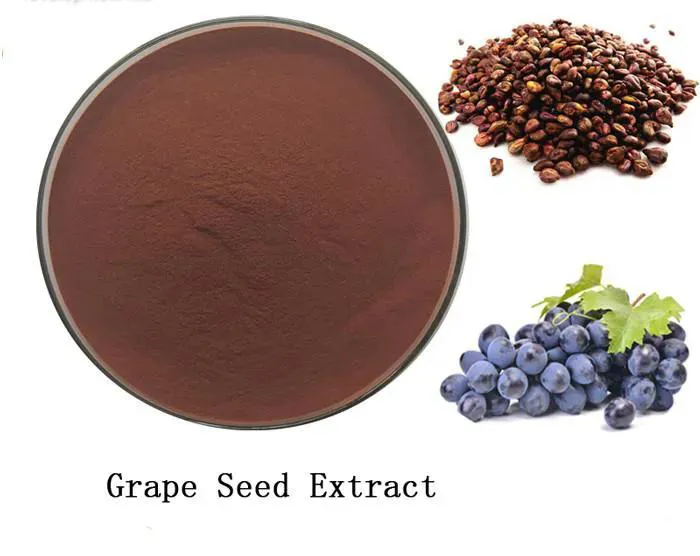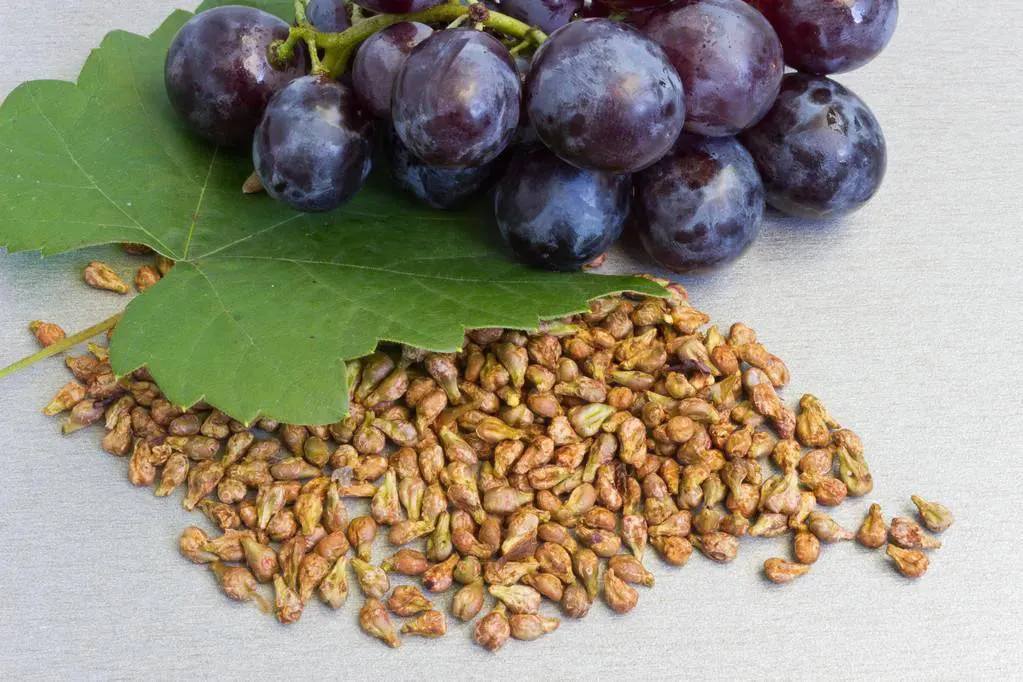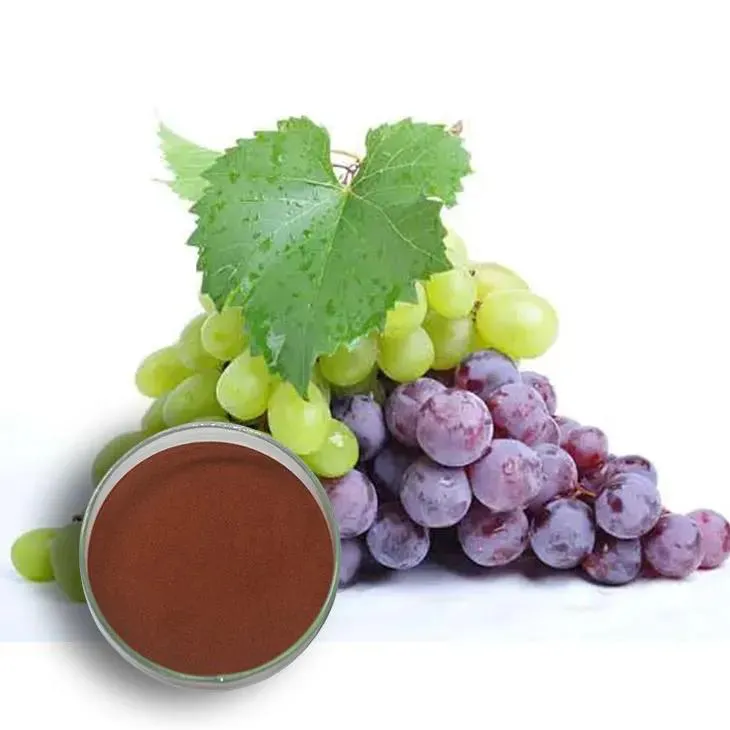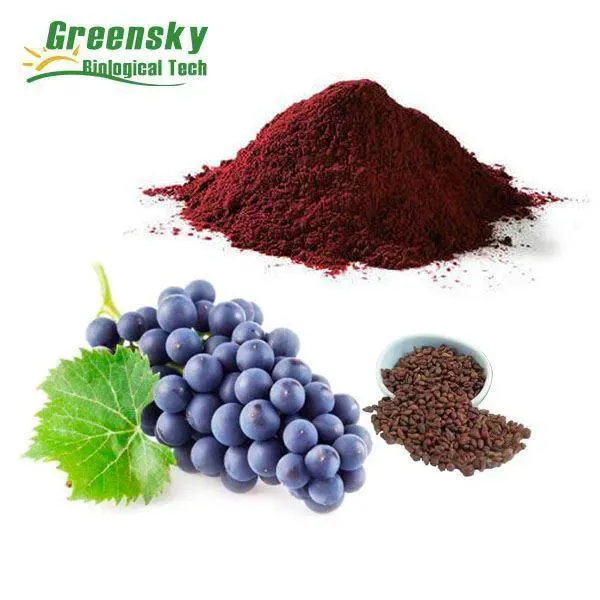- 0086-571-85302990
- sales@greenskybio.com
Seed to Synergy: A DIY Approach to Grape Seed Extract Production
2024-07-29

Introduction
Grape Seed Extract has been gaining popularity in recent years due to its numerous health - promoting properties. Instead of relying on store - bought products, which may come with added preservatives or be relatively expensive, a DIY approach to Grape Seed Extract production can be both rewarding and cost - effective. This article will take you on a journey from collecting grape seeds to understanding the extraction techniques and exploring the health benefits associated with Grape Seed Extract.

Collecting Grape Seeds
Source of Grapes
The first step in the DIY grape seed extract production is to obtain grape seeds. You can start by choosing the right source of grapes. You can either use grapes from your own vineyard, if you have one, or purchase organic grapes from a local farmers' market. Organic grapes are preferable as they are less likely to have been treated with pesticides, which could potentially contaminate the seeds.
Separating the Seeds
Once you have your grapes, the next step is to separate the seeds from the pulp. This can be a somewhat time - consuming process but is essential for a pure grape seed extract. You can do this by gently squeezing the grapes to release the pulp and then carefully picking out the seeds. Another method is to mash the grapes and then strain the mixture through a fine - mesh sieve to separate the seeds from the pulp.
Drying the Seeds
After separating the seeds, it is important to dry them thoroughly. Dried seeds are easier to store and process for extraction. You can spread the seeds out on a clean, dry surface such as a baking sheet and leave them in a well - ventilated area. It may take a few days for the seeds to dry completely. You can also use a food dehydrator if you have one, which can speed up the drying process.
Extraction Techniques
Mechanical Extraction
One of the simplest extraction methods is mechanical extraction. This involves crushing the dried grape seeds to release their beneficial compounds. You can use a mortar and pestle for small - scale extraction. Place the dried seeds in the mortar and gently grind them until they are broken into smaller pieces. This will start to release the oils and other components within the seeds.
Solvent Extraction
Another common technique is solvent extraction. This method uses a solvent to dissolve the active compounds in the grape seeds. A popular solvent for home use is food - grade ethanol. To perform solvent extraction, place the dried and crushed grape seeds in a glass jar. Add enough ethanol to cover the seeds completely. Seal the jar tightly and let it sit for a period of time, usually around two to three weeks. During this time, the ethanol will extract the beneficial compounds from the seeds. After the waiting period, strain the mixture through a coffee filter or a fine - mesh sieve to separate the liquid extract from the solid seed remnants.
Supercritical Fluid Extraction (Optional for DIY)
Supercritical fluid extraction is a more advanced technique that is often used in commercial production. While it may be difficult to perform at home on a large scale, it is worth mentioning for those interested in a more in - depth understanding. In this method, a supercritical fluid, such as carbon dioxide, is used as a solvent. The supercritical fluid has properties between a gas and a liquid, allowing it to penetrate the grape seeds and extract the desired compounds more efficiently. However, this requires specialized equipment that is not typically available in a home setting.
Refining and Concentrating the Extract
Evaporation
After obtaining the initial extract, whether through mechanical or solvent extraction, you may need to refine and concentrate it. Evaporation is a common method for removing excess solvent and concentrating the active compounds. If you used ethanol as a solvent, you can place the extract in a shallow dish and allow the ethanol to evaporate slowly in a well - ventilated area. This should be done at a relatively low temperature to avoid damaging the active compounds. You can also use a rotary evaporator if you have access to one, which can speed up the evaporation process while maintaining better control over the temperature.
Filtration
Filtration is another important step in refining the extract. This helps to remove any remaining solid particles or impurities from the extract. You can use a fine - filter paper or a membrane filter for this purpose. Filter the extract multiple times if necessary to ensure a clear and pure final product.
Health - Promoting Properties of Grape Seed Extract
Antioxidant Activity
Grape seed extract is rich in antioxidants, such as proanthocyanidins. These antioxidants play a crucial role in protecting the body against oxidative stress. Oxidative stress is associated with various diseases, including heart disease, cancer, and neurodegenerative disorders. By neutralizing free radicals in the body, grape seed extract can help reduce the risk of these diseases and promote overall health.
Cardiovascular Health
There is evidence to suggest that grape seed extract can benefit cardiovascular health. It may help lower blood pressure, reduce inflammation in the blood vessels, and improve blood lipid profiles. By reducing inflammation and improving the function of blood vessels, it can contribute to a lower risk of heart attacks and strokes.
Anti - Inflammatory Effects
The anti - inflammatory properties of grape seed extract make it useful for treating various inflammatory conditions. It can help reduce swelling, pain, and redness associated with arthritis, for example. Additionally, it may also be beneficial for skin conditions that have an inflammatory component, such as eczema or psoriasis.
Anti - Aging Benefits
Due to its antioxidant activity, grape seed extract can also have anti - aging benefits. It can help protect the skin from damage caused by UV radiation, pollution, and other environmental factors. By reducing oxidative damage to the skin cells, it can help maintain a more youthful appearance, reducing the appearance of wrinkles and fine lines.Storing and Using Grape Seed Extract
Storing the Extract
Once you have produced your grape seed extract, it is important to store it properly. Store the extract in a dark, cool place in an airtight container. This will help preserve its potency and prevent it from spoiling. If stored correctly, the extract can last for several months.
Using the Extract
There are various ways to use grape seed extract. You can take it orally by adding a few drops to a glass of water or juice. It can also be used topically for skin health. For topical use, dilute the extract with a carrier oil, such as coconut oil or jojoba oil, and apply it to the skin. However, it is important to note that before using grape seed extract, especially if you have any underlying health conditions or are taking medications, it is advisable to consult a healthcare professional.Conclusion
Producing grape seed extract at home through a DIY approach can be a fulfilling and beneficial endeavor. From collecting the grape seeds to extracting and refining the final product, each step offers a unique opportunity to understand the process and the properties of this valuable extract. The health - promoting properties of grape seed extract make it a valuable addition to a healthy lifestyle. Whether you are a health - conscious individual or a DIY enthusiast, this DIY approach allows you to have more control over the quality and purity of the extract you consume or use.
FAQ:
What are the basic steps in DIY grape seed extract production?
The basic steps typically involve collecting grape seeds, cleaning them thoroughly, drying them, and then using an appropriate extraction method such as solvent extraction or cold - press extraction.
What are the health benefits of grape seed extract?
Grape seed extract is rich in antioxidants, which can help fight free radicals in the body. It may also contribute to better heart health, improve skin condition, and have anti - inflammatory properties.
Is it safe to produce grape seed extract at home?
When following proper procedures, it can be relatively safe. However, one needs to be cautious with the use of solvents (if any) during extraction and ensure that all equipment is clean and suitable for food - related processes.
What kind of grapes are best for seed extraction?
Most grape varieties can be used for seed extraction. However, grapes with larger seeds and a higher concentration of beneficial compounds may be more preferable. For example, some wine - making grape varieties are often good candidates.
Can the DIY grape seed extract be as effective as the commercially available ones?
If the DIY process is carried out correctly, it can be just as effective. However, commercial products may have more standardized production processes and quality control measures.
Related literature
- Grape Seed Extract: Chemistry, Bioavailability, and Cardiovascular Benefits"
- "The Production and Health - Promoting Properties of Grape Seed Extract: A Review"
- "DIY Natural Extracts: Grape Seed Extract in Home Settings"
- ▶ Hesperidin
- ▶ Citrus Bioflavonoids
- ▶ Plant Extract
- ▶ lycopene
- ▶ Diosmin
- ▶ Grape seed extract
- ▶ Sea buckthorn Juice Powder
- ▶ Fruit Juice Powder
- ▶ Hops Extract
- ▶ Artichoke Extract
- ▶ Mushroom extract
- ▶ Astaxanthin
- ▶ Green Tea Extract
- ▶ Curcumin
- ▶ Horse Chestnut Extract
- ▶ Other Product
- ▶ Boswellia Serrata Extract
- ▶ Resveratrol
- ▶ Marigold Extract
- ▶ Grape Leaf Extract
- ▶ New Product
- ▶ Aminolevulinic acid
- ▶ Cranberry Extract
- ▶ Red Yeast Rice
- ▶ Red Wine Extract
-
Nutmeg Extract
2024-07-29
-
Carrageenan Extract Powder
2024-07-29
-
Polygonum Cuspidatum Extract
2024-07-29
-
Jujube Extract
2024-07-29
-
Longan Extract
2024-07-29
-
Coconut Water Powder
2024-07-29
-
Bamboo Leaf extract
2024-07-29
-
Red Date Extract
2024-07-29
-
Gynostemma pentaphyllum extract
2024-07-29
-
Sugarcane Extract
2024-07-29





















